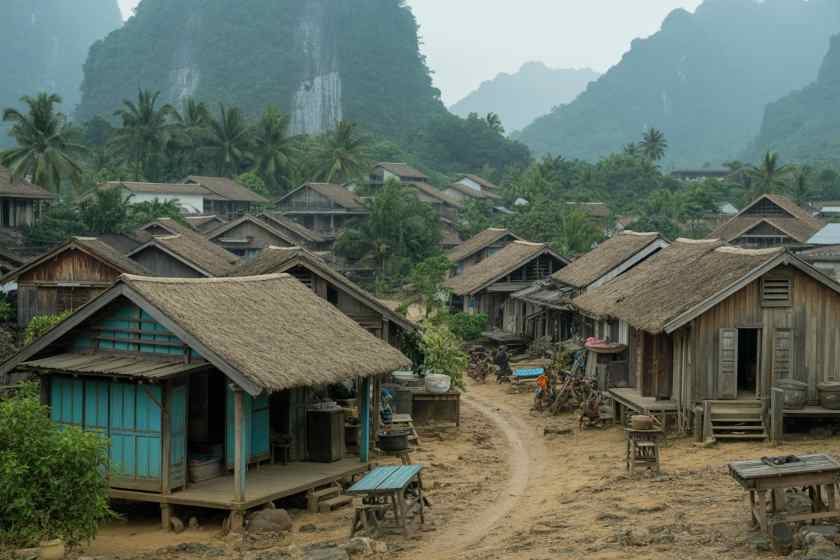‘Goa is not just a beach-destination, it has huge potential for eco-tourism’

Earlier this month, P.S. Sreedharan Pillai, the governor of Goa and an eminent author who has so far penned 230 books held a symposium on the traditional trees of India at the Raj Bhavan in Goa. Well-known experts from across India participated in the symposium and presented their valuable study papers on India’s rich natural heritage. Under his governorship, the Raj Bhavan is taking steps to promote Goa’s lesser-known historical and cultural heritage, especially through the governor’s widely circulated books, including, ‘Heritage Trees of Goa’, ‘Discovery of Vaman Vriksha Kala’ and ‘Heavenly Islands of Goa’.
The governor’s writing career began in 1973 with articles, stories and poems. Speaking about Dr Pillai, Goa CM Dr. Pramod Sawant in an earlier occasion, said, “His first book came to be published in 1985 bearing the title ‘Rent Laws of Kerala.’ The pace of his writings then picked up and he attained the first milestone in his career when his Malayalam book ‘Pazhassi Smriti’ was released in 2010 by the then President of India, Pratibha Patil.”
The governor’s 100th book – ‘Dark Days of Democracy’—was released by Prime Minister Narendra Modi in 2018. The next 100 books have incredibly come in a short span of 5 years. In an exclusive interview with THE WEEK from Raj Bhavan in Goa, the governor speaks about his interests and more.
Excerpts from the interview:
Tell us about the symposium on traditional trees of India. What was the idea behind it?
We are bound to promote constitutional provisions mentioned in chapters of Directive Principles and Fundamental Duties. i.e Chapter IV and Article 51 A. Our mother land Bharatvarsha, from time immemorial, expounded that plants are sentient beings, though their faculties are dormant, dull and stupefied. The Rig Veda and Atharva Veda note consciousness in plants. Our ancient findings on plant consciousness are now accepted by the world as true. Jagadish Chandra Bose, the Indian scientist, discovered over a century ago that plants possessed a nervous system similar to animals. Bose became the first to use the term ‘Plant Nerve’. Before him, Augustus Waller from London claimed that he had reported ‘the phenomenon of vegetable electricity’. Bose’s first experiments went to proving plants had life. He invented the machine ‘crescograph’ – (A crescograph is a mechanical device that measures plant growth, and was invented by Bose in the early 20th century) and through it he convinced the world the screams of agony of a fresh cabbage while it was being boiled in water. He demonstrated it before the Royal Society of London in 1901. Nobel Prize winner George Bernard Shaw – (Irish playwright), who was a vegetarian, is said to have wept while witnessing the screams of agony of a fresh cabbage while it was being boiled in water by J.C. Bose. Now, the world accepted the theory put forward by Bose about one century ago. Why did Western scientists and Indians overlook the details of Shri. J.C. Bose’s detailed experiments in full vigor is a question that requires an answer even now.
You say you have a reverence for trees. You have even penned a book titled ‘Heritage Trees of Goa’.
It was in Mizoram that I first learnt about my own fascination for trees. Before coming to Goa, I was the governor of Mizoram for almost 2 years. In the National Index of Happiness, Mizoram is ranked No. 1. Its forest cover is 89 per cent in terms of percentage vis-à-vis geographical area. You look at Finland. In the World Happiness Index Finland is ranked as the happiest country on the earth. Its forest cover is 74 per cent. So, you see there is a definite correlation between happiness and forest cover. You all know when trees breathe they take in the carbon dioxide that we breathe out and they release out the oxygen that we breathe in. So, you can then imagine the huge quantum of pure fresh oxygen that is available to all these fortunate people and how much it has contributed to their overall well-being. In terms of other benefits, trees absorb cosmic healing energies from the sun and moon and gently radiate them toward the earth’s living beings for their health and well-being. Trees shelter thousands of creatures of all kinds. Every single part of a tree is useful, either as food, medicine, fuel, timber, or as source material for building various things. Therefore, we as human beings must understand and appreciate their indispensable and invaluable existence on the planet.
You have highlighted Goa’s vast green cover and have promoted it for tourism
After I took charge as governor (of Goa) in July 2021, I visited Partagal Mutt in Canacona Taluka to pay my respects to His Holiness. Swamiji informed me about the existence of thousand-year-old a banyan tree in the sacred precincts of Partagal Mutt. It was then I decided that one day I would return to the Partagal Mutt to worship this great banyan tree. About a year later, I began the Saimik Daiz Yatra (journey to learn about natural heritage trees of Goa) by worshipping the thousand-year-old banyan tree in the divine presence of His Holiness and then went on to see and learn about 30 more heritage trees all more than 100 years to 500 years old spread out over the length and breadth of Goa. There were some amazing trees that I discovered on the premises of the temples and churches like Shidam, Satvin, Baobab (an African tree known as ‘Tree of Life’), Maddi and Hudo. These trees reflect the deep spiritual and cultural bonds of local communities with nature and have been worshipped and protected by the people over the centuries. These trees also constitute an integral part of the folklore and socio-cultural association of the people with nature and the environment. The yatra resulted in the writing and publication of ‘Heritage Trees of Goa’ which was released by the governor of West Bengal. The main purpose of this book was to let the country and the world know about the unique eco-cultural heritage of Goa and to promote the state as an eco-tourism destination.
You have also authored a book titled ‘Vaman Vriksha Kala’ based on the art of Bonsai and created a Bonsai garden in the Raj Bhavan to further promote this art. Tell us more about it.
‘Vaman Vriksha Kala’ is a monograph focusing on the specialised subject of ‘Bonsai’ i.e. potted trees. In fact, the name of the book means ‘the art of miniature trees.’ The prime intention of the book is to firmly establish the fact that Bonsai is originally an Indian art, as against the widely held belief that it belongs to China and Japan. In the book I have provided sufficient evidence from ancient Sanskrit texts to establish this claim that the art of Bonsai has its roots in India, and why our ancestors reduced trees to potted size.
Then there is this book on Kaavi Art, a type of stencil technique with red soil and lime, most often found in coastal Maharashtra and Karnataka. How did you come to write a book on it?
I was fascinated with Kaavi Art as it is Goa’s only native painting technique and it happened during my visit to Bicholim when I witnessed the restored Kaavi artworks at the Shree Hanuman temple at Advalpale. Later, we had a four-day workshop at the Raj Bhavan in Goa to promote this art. I truly believe that Aaavi Art is a masterpiece of Goa’s cultural heritage. It is also important to note that Prime Minister Narendra Modi mentioned the importance of Kaavi Art in his ‘Mann Ki Baat’ episode in 2021. I am sure it will bring nationwide attention to this ingenious art form.
It will be four years since you assumed charge as Governor of Goa. What do you think are the aspects that still require a change in the state?
The first and foremost change is required in the mindset that Goa is a beach-only destination. There is so much more to this state that needs to be talked about. Goa has a huge potential as an eco-tourism destination, with a rich historical and cultural heritage. At the Raj Bhavan that has been my single-minded focus so far and that is how I have highlighted varied aspects of Goa through numerous books that I have authored over the last four years.
link






